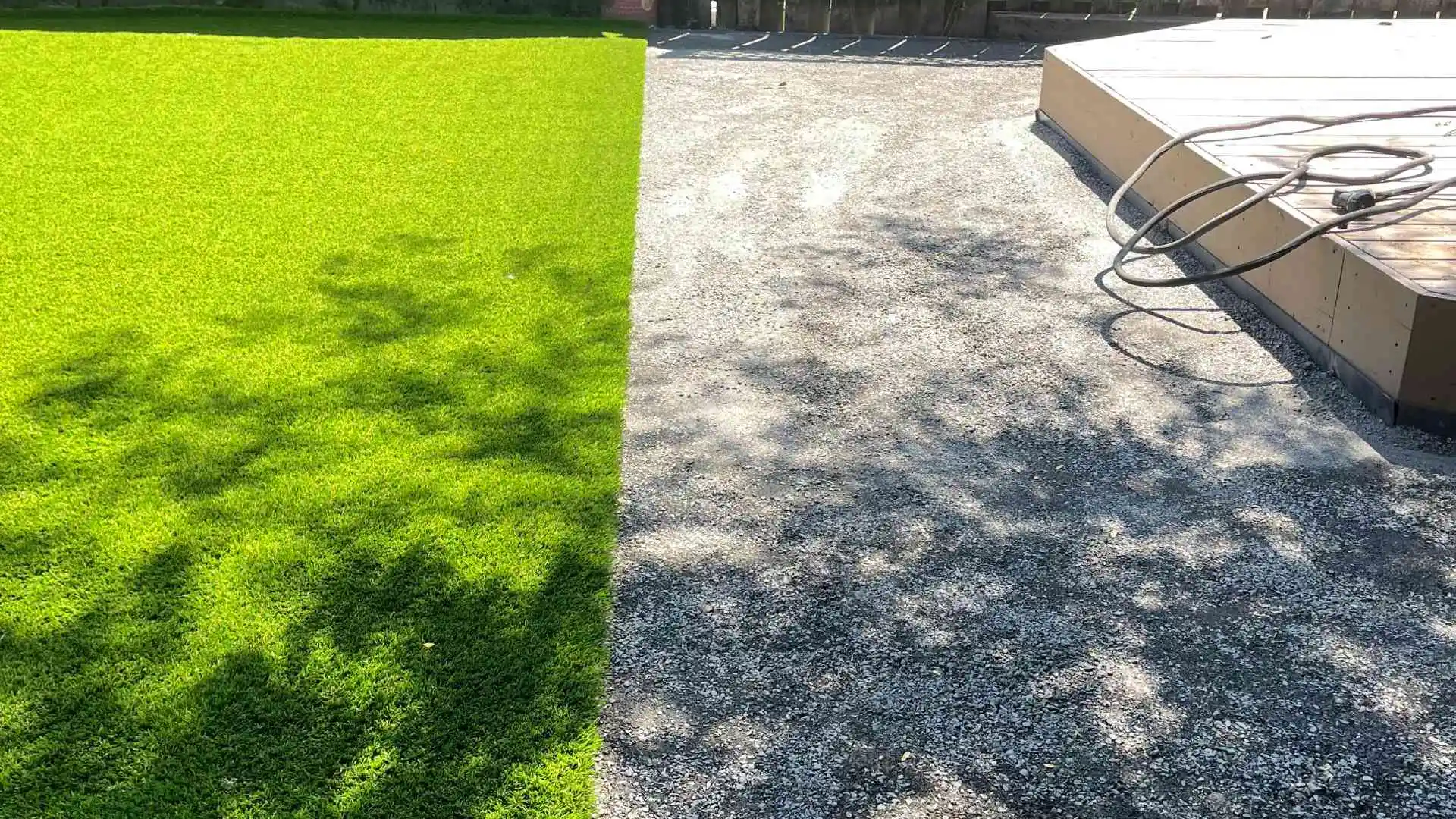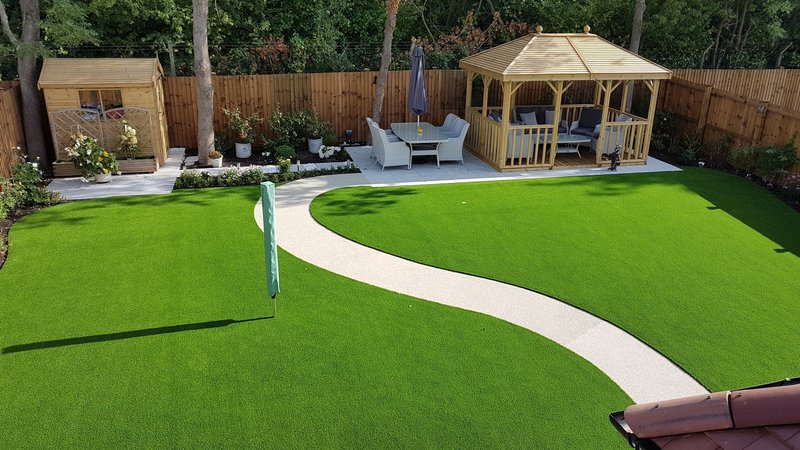Top Factors to Take Into Consideration Artificial Lawn for a Low-Maintenance and lush Backyard
As property owners increasingly seek lasting services for exterior spaces, synthetic grass provides an attractive option to traditional yards. The benefits extend beyond simple looks and sustainability; exploring the complex implications of man-made yard reveals an extensive approach to lawn monitoring that benefits much deeper factor to consider.
Year-Round Plant
One of the most considerable benefits of fabricated yard is its capacity to give year-round plant, regardless of climate problems. Home owners often encounter obstacles in keeping a vivid yard because of seasonal adjustments, dry spells, or hefty rainfall. Man-made turf gets rid of these worries, guaranteeing a consistently lush look throughout the year.
This synthetic choice is engineered to endure varied climate circumstances, from sweltering summer season heat to freezing winter months temperature levels. Unlike natural turf, which may brownish or end up being patchy throughout extreme conditions, synthetic grass preserves its dynamic shade and texture, enhancing the visual appeal of any kind of landscape.
Furthermore, synthetic turf is immune to insects and diseases that commonly impact natural grass. This durability adds to its enduring elegance, as there is no need for chemical treatments or plant foods that can be damaging to the environment. Moreover, property owners can delight in the aesthetic benefits of a well-kept lawn without the cyclical challenges presented by all-natural turf treatment (artificial grass canoga park).
Minimized Maintenance Efforts
Man-made yard considerably reduces upkeep initiatives, allowing property owners to enjoy a beautiful yard without the taxing jobs related to all-natural yard treatment. One of one of the most noteworthy benefits of synthetic turf is the elimination of routine mowing. With no need for a lawnmower, property owners save both time and the expense of maintenance connected with this equipment.

Cleaning up fabricated grass is straightforward; a simple rinse with a pipe or the occasional brushing to remove particles is normally enough - artificial grass canoga park. This simplicity of treatment permits property owners to spend more time appreciating their exterior rooms rather than laboring over them. In recap, the lowered upkeep initiatives connected with artificial turf make it an appealing option for those looking for a beautiful, hassle-free backyard
Water Conservation Advantages
The considerable reduction in maintenance efforts related to artificial grass encompasses water conservation, making it an eco-friendly alternative for house owners. Standard grass need significant quantities of water to continue to be lively and lush, commonly bring about too much water use, especially in dry regions. In contrast, synthetic turf eliminates the need for regular watering, considerably minimizing the general water usage in your backyard.
By selecting artificial grass, house owners can save countless gallons of water each year. This change not just advantages private homes but additionally adds to more comprehensive ecological efforts aimed at reducing water waste. In locations experiencing water shortage, the adoption of artificial yard can play a considerable role in minimizing the impacts of dry spell and making sure that important water resources are made use of much more successfully.
In addition, the setup of artificial yard can assist reduced community water demand, profiting the community in its entirety. With growing awareness of environmental issues, selecting artificial yard works as an aggressive action in the direction of sustainable landscape design, assisting to maintain natural water resources while preserving an aesthetically pleasing outside space (backyard artificial grass). In recap, synthetic grass provides an engaging solution for water conservation, aligning ecological duty artificial grass with modern-day landscaping needs

Parasite and Allergic Reaction Decrease
A considerable advantage of setting up synthetic turf is its capability to lower insects and allergens in exterior rooms. Conventional grass lawns frequently act as reproducing premises for bugs such as mosquitoes, ticks, and ants, which can create pain and wellness dangers for households and pets. In contrast, artificial yard gets rid of the organic product that draws in these insects, thereby considerably lowering their populaces in your lawn.
Moreover, natural turf can nurture mold and mildew, plant pollen, and other irritants, which can cause allergies and respiratory system issues for delicate individuals. Synthetic turf gives a cleaner atmosphere, reducing the capacity for allergenic responses. Unlike natural turf, synthetic lawn does not produce plant pollen, making it an outstanding alternative for allergy sufferers looking for to appreciate their outside rooms without the risk of flare-ups.
In addition, the absence of dirt in synthetic lawn implies there is much less dust and dirt, further minimizing air-borne allergens. This low-maintenance choice not only boosts the aesthetic charm of your backyard but likewise advertises a much healthier outdoor atmosphere, permitting families to enjoy their grass without the constant fear of pests and allergens. Thus, synthetic turf is a strategic choice for those prioritizing convenience and wellness in their outdoor home.
Long-Term Price Savings
Purchasing synthetic lawn can lead to significant long-term cost savings for property owners. While the preliminary financial investment may seem substantial, the monetary advantages with time can be substantial. Synthetic grass eliminates the need for regular lawn maintenance costs, such as mowing, feeding, and watering. Typical grass frequently require substantial resources to keep a lavish appearance, specifically in locations vulnerable to drought or extreme climate condition.
Additionally, the durability of synthetic turf further boosts its cost-effectiveness. A lot of top notch man-made turf products can last 15 to 25 years with minimal maintenance, lowering the demand for replacement or extensive repair services. On the other hand, all-natural turf may call for regular reseeding and routine care, which can quickly build up in costs.
Energy cost savings are another critical variable. House owners can expect to see reduced water bills, as artificial lawn does not need irrigation. In addition, the reduction in grass care solutions can liberate important time and resources, enabling property owners to allocate their spending plans somewhere else.
Verdict
In recap, artificial lawn offers countless benefits for homeowners looking for a vibrant and low-maintenance landscape. Its capacity to offer year-round plant, coupled with minimized upkeep efforts and considerable water preservation, makes it an attractive selection. Additionally, the decrease of parasites and allergens adds to a healthier outside setting. Ultimately, the long-lasting price savings related to synthetic grass strengthen its standing as a sensible and sustainable service for my explanation improving outside rooms.
Synthetic turf substantially decreases upkeep initiatives, enabling house owners to appreciate a pristine lawn without the taxing jobs connected with natural grass my blog care.The considerable reduction in upkeep initiatives linked with fabricated lawn extends to water preservation, making it an eco pleasant option for home owners. In contrast, synthetic lawn gets rid of the need for normal watering, significantly reducing the overall water intake in your yard.
In locations experiencing water deficiency, the adoption of artificial lawn can play a considerable role in mitigating the results of dry spell and ensuring that useful water resources are utilized much more successfully.
With growing awareness of environmental issues, choosing synthetic grass offers as a proactive action in the direction of lasting landscaping, aiding to protect natural water resources while keeping a visually pleasing outdoor space.
Comments on “Backyard Artificial Grass Canoga Park Ideas for Functional Outdoor Living”